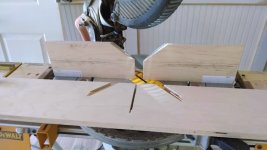Hey Guys,
My wife wants crown molding and wants me to do it. I like the idea because that means I get a new miter saw, but the bad news is it won't be a Kapex.
So there is the purpose of this topic.
I really can't justify the Kapex, even with the 10% off right now. I want to get some opinions on other brands and models that would be a good choice for the molding and general use around the shop. I obviously care about the cost, but I also know there are plenty of other saws in a more moderate price range, but don't limit your opinion based price. I know that sound oxymoron, but I can probably pull off $500 with the wife, but not $1400, even though she does appreciate the green addiction that her husband has for the good stuff and does realize the coolness factor
Marcus
My wife wants crown molding and wants me to do it. I like the idea because that means I get a new miter saw, but the bad news is it won't be a Kapex.
So there is the purpose of this topic.
I really can't justify the Kapex, even with the 10% off right now. I want to get some opinions on other brands and models that would be a good choice for the molding and general use around the shop. I obviously care about the cost, but I also know there are plenty of other saws in a more moderate price range, but don't limit your opinion based price. I know that sound oxymoron, but I can probably pull off $500 with the wife, but not $1400, even though she does appreciate the green addiction that her husband has for the good stuff and does realize the coolness factor
Marcus

